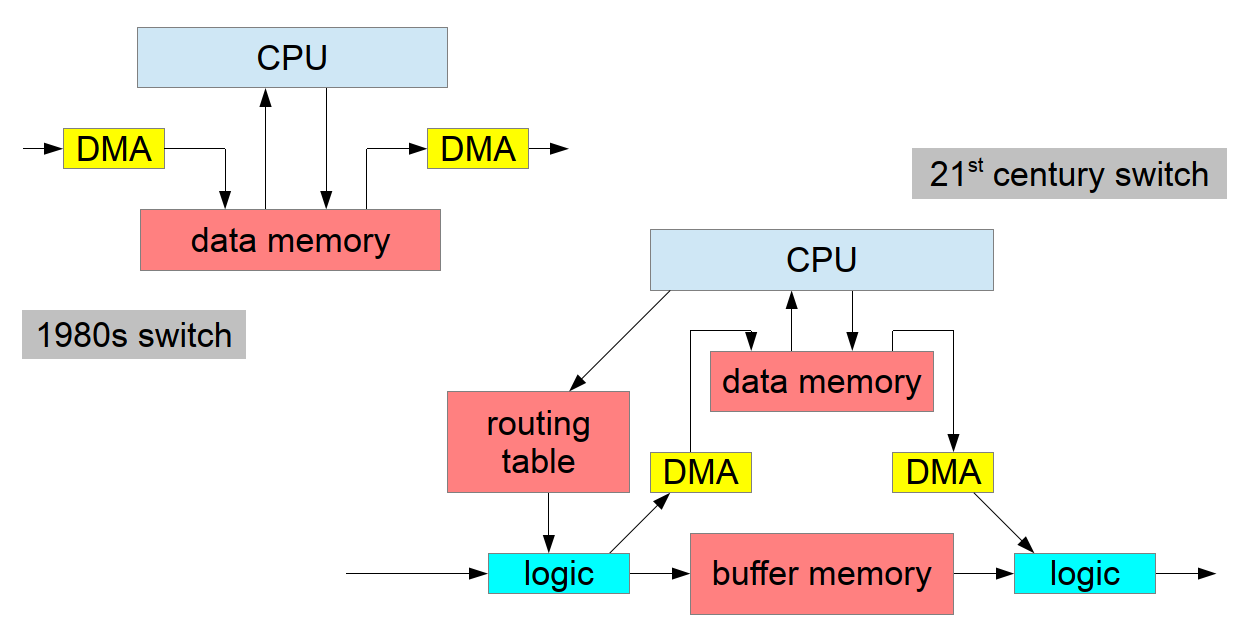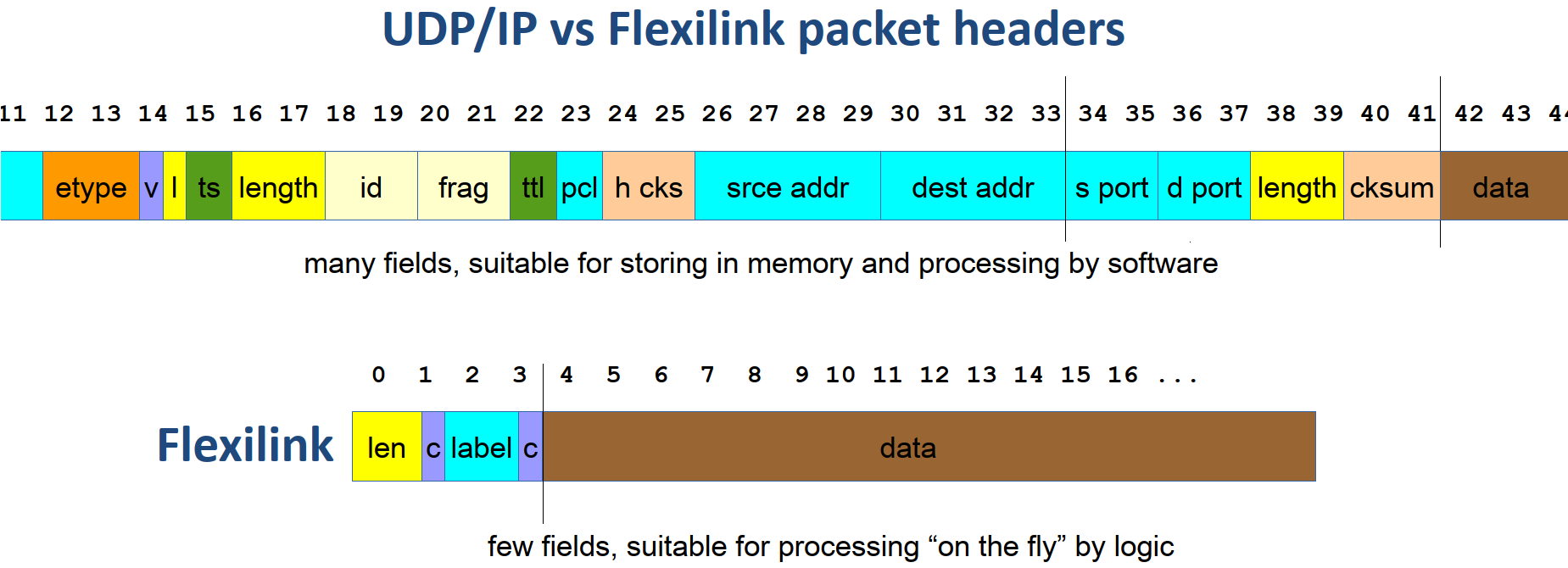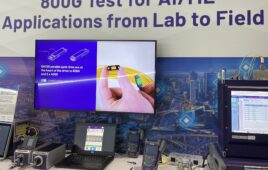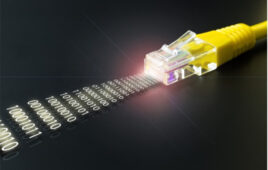The Non-IP Networking group within ETSI seeks to reduce the packet overhead of Internet Protocol because it’s become a bottleneck in today’s high-speed mobile networks.
Internet Protocol (IP) is one of the technologies that made the internet a reality. Occupying Layer 3 of the Open Systems Interconnect network model, IP works on the premise that every networked device has an IP address. When it became clear that IPv4’s four billion addresses weren’t enough, IPv6 significantly expanded that number.
IP carries more than addresses in its packets. As new features have been added, the packet headers have grown and with today’s high-speed networks, some engineers see IP packets as a bottleneck.
IP was originally designed to transport data; timely delivery wasn’t an issue. Then came voice over IP (VoIP). (Remember when that was a hot technology?) Then came video, which made life even harder.
An uneven flow of data isn’t a problem when downloading files or browsing the web. No so with voice and video. Think of what happens at rush hour, everything slows. Postal mail has the same issue around holidays–deliveries take longer. In this time of coronavirus, internet traffic is high but postal mail is extremely light. Case in point: I sent a letter envelope by first class mail from Boston that arrived in Chicago the next day.
“An IP address is like a phone number,” said ETSI’s Non-IP Networking (NIN) group chair John Grant in an interview with 5GTW. “It defines the destination of the packet.” Think of a landline phone where the destination is a fixed location. In the case of internet, the fixed location is a computer. With mobile devices, however, the fixed network ends at the radio tower. Therefore, you need two IP addresses for your service, one that the app sees and one for the tower. Think of it as where and as who. When you’re handed over to a new tower, the service needs to use that tower’s IP address.
Figure 1 shows a typical IP packet header, 28 bytes in this example. Included with source and destination addresses and ports are several other parameters such as packet length and checksum.
The consumption of network capacity by headers has caught the eye of engineers at ETSI, which announced on April 7 the NIN group to develop a specification that replaces IP with something more efficient. “Mobile carriers are paying for spectrum used for TCP/IP overhead,” said Grant. “There’s a lot of unnecessary overhead.”
IP headers contain all the information needed to transport a payload. Everything the packets needs to deliver the payload must be in the packet. That, according to Grant, was fine when memory was expensive but that’s no longer the case. Processing of IP headers was originally done entirely in software. That requires a CPU to handle the data, moving it in and out of memory. Communications must compete with other functions for CPU time.
Over the last ten years, however, hardware has been able to take over some of the processing. Because digital logic devices such as FPGAs can handle the data flow, they can process data sequentially, as it comes in. That continuous process can keep up with data flow without burdening a CPU. Figure 2 compares a 1980s switch to a modern switch.

Figure 2. A 21st century data switch uses a routing table to control the flow of data packets. (Image: ETSI)
The 21st Century switch uses a routing table for flows it knows about. Logic relieves the CPU for processing traffic by looking at send/receive addresses, send/receive port numbers, and protocol (UDP or TCP riding in top of IP) contained in parts of the packet header.
The change in switch structure accompanies Software Defined Networking (SDN). With SDN, a switch consists of ports and tables where packets enter and exit through ports. Tables contain information that tell the switch logic what to do with the packet. Because today’s architectures focus on information flow, they can operate on smaller packet headers. With some of the flow information contained in a table, there’s less packet overhead and more bits can be dedicated to data.
Because IP was designed for computers in fixed locations, it’s had numerous add-ons over the years and has gotten rather top heavy. The overhead issue became apparent several years ago as 5G was in development. In late 2015, ETSI formed the Next-Generation Protocol (NGP) group to investigate how to improve on IP’ deficiencies. Now that NGP has identified the issues and completed its mission, ETSI was ready to create a group to solve them. NIN was officially announced on April 7, 2020.
The NGP group laid the groundwork for Flexilink, a protocol that improves on IP shown in Fig. 2. ETSI GS NGP 013 V1.1.1 (2018-09), spells out the basics, but the specifics of this new packet structure are still in development. Flexilink takes advantage of tables to reduce the overhead. Packets need not carry around nearly as much information (Figure 3).

Figure 3. Flexilink packet headers contain far less information than IP headers. Tables separate user data from control data. (Image: ETSI)
The NIN group hopes to have a specification written by July with trials taking place by the end of 2020. “A prototype processor with audio and video interfaces that uses an FGPA, an Ethernet PHY, DRAM, and flash memory has been developed” said Grant. “The FPGA has a soft processor tailored for protocols to manage data flows in Ethernet packets.” The prototype focuses on audio and video because today, IP networks carry delay-sensitive traffic–voice and video–that needs enough guaranteed data flow to keep us from experiencing service gaps or video artifacts.
Grant also noted that IP is susceptible to hacking because the IP addresses of each device travel in packet headers. That makes them easy for hackers to find.
With a specification and working prototypes expected by the end of 2020, Flexilink (or final name) should begin to be used in private networks from 2021. IP is entrenched and equipment makers will want to maximize revenue from existing technology for as long as possible. After all, just moving IPv4 to IPv6 took some twenty years. Flexilink may be the technology of the future, but IP will be in use for a long time.






Tell Us What You Think!